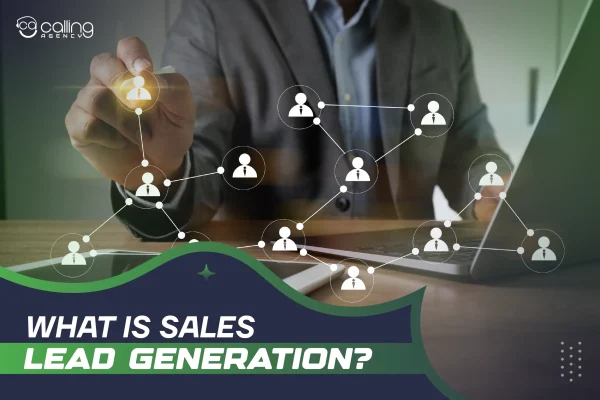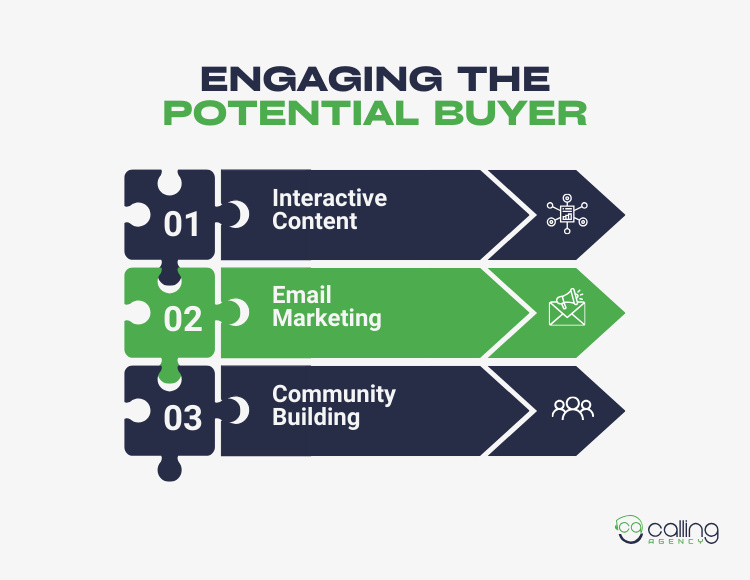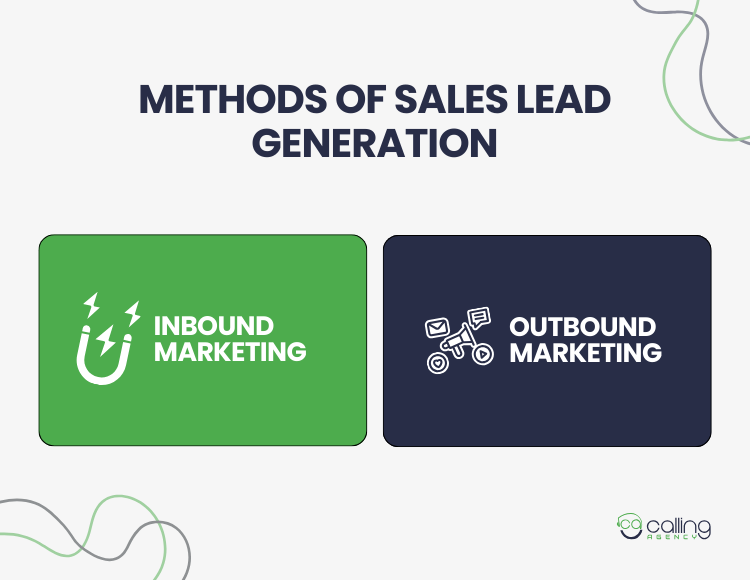Sales lead generation is the strategic approach of identifying leads, attracting them, and then qualifying prospects for keeping the sales funnel full of potential customers that surely increase business revenue.
Effective sales lead generation is not only about quantity but also about the quality of leads generated, as businesses aim to build lasting customer relationships.
This facilitates the chance of enabling businesses to connect with prospects, nurture relationships, and ultimately convert them into paying customers. Still, for 61% of marketers, lead generation is one of the biggest challenges.
So, today, we will break down the process for effective Sales Lead Generation from content creation, lead scoring to CRM sales integration, with the benefits.
Ultimately, you can fill the sales funnel with qualified leads only, that can convert into loyal customers.
Difference Between A Lead And A Prospect
Leads are pre-interested persons who have not become customers yet. In contrast, prospects are qualified leads that can be primed for conversion.
In marketing, these are mostly used terms: lead and prospect. Many marketers assume them to be the same, but they indicate different situations of a person in the buyer journey.
Before starting with the process, a clear difference between them is a must since these two terms are closely related to lead generation.
Lead
A lead can be a business or person who somehow engages with the company or becomes interested in the content or product. In this phase, they are not going to purchase anything.
Leads can be obtained through various means, such as website inquiries, social media engagement, registration for events, asking for gated content or filling out forms.
In this period, there is limited information about the leads, such as name or email.
They are typically at the top of the sales funnel and require further qualification.
Prospect
After qualifying the leads, they take the role of being prospects. They are more promising people or businesses who can take purchasing action.
Prospects demonstrate a higher level of interest or engagement with business, indicating that they may have a genuine need for the product or service.
The transition from a lead to a prospect involves gathering more information and assessing their suitability as a potential customer.
To make them pay customers, the right approach and sales effort are necessary.
The Process Of Sales Lead Generation
A systematic and good sales lead generation service makes it reliable for growing business sales.
This works like a magnet and is an easy way to showcase business in the marketplace and attract leads. Also, let the business spend quality time and energy to explore a better version of the company.
But the proper steps are crucial for achieving the success, and here are in-depth inbound methods you can rely on.
1. Attracting a potential buyer
The first step of sales lead generation is attracting a potential buyer. And in the digital marketing realm, it widens the door to get customers more quickly than before.
Here are some top most efficacious methods regarding attracting a potential buyer.
Content Creation
Content creation is the core of attracting customers. Undoubtedly, it is a clever and instantaneous approach to get fresh consumers.
Content creation includes blog posting, social media posts, videos, websites and many more. Users come themselves if they feel interested in the content.
Statistics show that educational blogs result in an increase of 500% in website traffic, and 77% of marketers claim podcasts are mostly effective content to generate more leads. So, you can think about how important content marketing is.
But attracting them takes a lot of work. It needs high-quality, relevant, up-to-date, authentic content to gauge the interest of the target audience.
Search Engine Optimization
SEO is the impactful way for online content and websites to rank higher in SERPs. Your content can grab the most attention only if it ranks well.
This is the exact thing SEO does. It helps to reach the right person with the right content. So, better utilize your SEO strategies by integrating local SEO techniques for buyers to find your content when they search for relevant keywords.
- Conduct keyword research that has low competition but a high volume related to your niche.
- Build a blog with SEO-optimized content, such as using relevant keywords, publishing regularly, and using sub-headings and links.
- Use authorized backlinks.
- Boost your website speed.
Social Media Marketing
With the rapid changes in people’s behavior and the increasing tendency to use social media, these platforms are broadly used for marketing.
19% of marketers say that a significant number of leads are generated from social media. More surprisingly, 90% of leads coming from Twitter alone tend to become sales leads.
So, try to cope with the social media platforms. Share and boost the content that eventually can increase brand awareness.
Find out people which platform they use most related to your niche. Then, work accordingly.
2. Engaging The potential buyer
The second step is engaging potential customers. Only gauging interest is not enough; you need to take steps to engage them.
Interactive Content
Content needs to be interactive and educational. People avoid irrelevant and disruptive content.
Try to maintain content that includes the target audience’s specific preference, age and culture. Focus on trendy topics and add them in your blog articles, videos.
Also, “How To Do” content, guidance videos, and problem-solving content can grab customers’ attention easily. But avoid using fake information rather than focus on real-time data.
Email Marketing
Email marketing cultivates a functional way to nurture leads and keep them engaged; works professionally but efficiently. It is the most effective online platform for lead nurturing at 78% of lead conversion.
Email messages should be personalized, with valuable information. The subject line needs to be eye-catching and have a summary of the whole content.
For example, if you are sending a discount-related email, then the subject line can be “50% sale on this product”. These tricks mitigate the risk of emails going to spam. Otherwise, it can hamper the brand image.
For email marketing examples can be,
- Educational Newsletters
- Welcome Series
- Stock Email
- Personalized Recommendations
Community Building
Nowadays, people are more connected in online communities, where they like to share things and discuss with like-minded individuals. This can be a great opportunity in sales lead generation.
There is a chance of grabbing people of the same interest in your brand. Facebook pages, groups, and messenger groups can be some great options.
This can bring a massive community to your fingertips and also establish brand authority. But proper maintenance, regular post updates, replying to customers’ comments, and inbox messages are all required for good community building.
3. Convert
The process of sales lead generation involves multiple stages, and the “Convert” stage is critical for turning website visitors or leads into possible prospects.
It is about guiding visitors through a seamless process that includes seeing a compelling CTA, landing on a well-crafted landing page and filling out forms.
Landing Pages
Landing pages are dedicated web pages toward specific marketing offers or products. It provides information in return to encourage users to sign up for a newsletter, requests to download e-books or gated content and so on.
Following this, the leads convert into customers gradually.
Your landing pages should be appealing, user-friendly, and transparent with essential details. Also, it should load quickly and be mobile-responsive.
Call-To-Action (CTA)
A CTA is a prompt or button strategically placed on web pages, blog posts, emails, and social media posts. This encourages visitors to take action by clicking a landing page or filling out a form.
The structure should be concise, action-oriented, and visually distinct. Examples of CTAs include “Buy Now,” “Read More”, “Get Started,” “Download Now,” “Subscribe,” “Request a Quote,” or “Contact Us.”
Forms
Implement lead capture forms on your website and landing pages. Here, visitors provide their information in exchange for the offer.
Forms include information like name, email address, phone number, company name, and sometimes additional qualifying questions.
Long, intrusive forms can deter conversions. Strike a clear path about user convenience and data accuracy, along with providing explicit instructions on how to complete the form.
4. Qualification
Qualification is the most inseparable part of sales lead generation. Even if businesses get thousands of unqualified customers through attractive content, it is not going to help the company’s revenue.
The qualification stage ensures that sales representatives spend their time and resources on leads with the highest potential for success.
While qualification involves several steps, it primarily focuses on lead scoring and direct engagement.
Lead Scoring
In marketing, lead scoring is the methodology of identifying the worthiness of leads becoming prospects by gathering their behavioral information related to the product.
You can find the lead scoring information in the forms mainly.
- Demographic Scoring: Evaluate lead attributes such as demographic location, job title, and industry to assess their potentiality as a customer. Remove people or give negative scores to those who are not in your business area if you are selling products in a particular location.
- Company Information: if you are a B2C company, then you need to align with only individuals. In B2B businesses, the goal is reaching other businesses. In your landing page forms, add a question section and ask what type of solution the visitors are seeking out and score them accordingly.
- Online Behavioral Scoring: Analysis of website visits, content downloads rate, and clicks as indicators of engagement. How leads know about your website, how much time they spend on pages or what type of content nurtures them most. Assign points for each action.
- Email Engagement: Someone, after opt-in to receive email, analyzes the open click rate. What type of mail attracts them most, or how often do they check their emails?
- Social Engagement: Which social media platform is gaining the most sights from visitors toward your business? This is crucial so you can get leads by investing in the right platform.
Direct Engagement
For qualifying leads, direct engagement is beneficial, gives a quicker solution.
- Lead Nurturing: For leads that are not immediately sales-ready, utilize lead nurturing campaigns. Send targeted and personalized content, build trust, and maintain engagement with leads over time.
- Direct Outreach: If the leads give permission for direct outreach and meet sales-ready criteria. Then, engage in methods like calls using inbound telemarketing, emails, or social media messages. Customize your outreach based on the lead’s previous interactions and interests.
- Qualification Conversation: During direct engagement, have conversations with leads to gather more information and understand their specific needs. Then, assess their readiness to make a purchase.
5. Handover To Sales
Sales lead generation is all about handing over promising customers to the sales team.
Once you are done with the previous steps and follow them precisely, it is time to transfer the prospects.
Communication between marketing and sales reps is essential at this stage to ensure a smooth transition and alignment on lead quality and expectations.
Sales CRM Integration
A Sales CRM system is a software tool that helps sales teams manage customer relationships, track interactions, and streamline the sales process.
Leads generated through marketing efforts enter into the CRM system. Here, sales representatives access their details, track interactions, set follow-up tasks, and record progress.
CRM integration provides a centralized platform for sales teams to manage leads.
For a successful sales CRM integration, a couple of techniques are involved.
Choose the right CRM software: You need to choose the perfect CRM software that can do all the necessary tasks you want.
Audience and customer segmentation: With a CRM tool, it is easier to segment data based on buyer’s behavior and helps to sort prospects from tons of data.
Lead prioritization: CRM reduces the timing in deciding who is a high-priority lead and who is low. Sales reps can differentiate the level of prospects and contact quality leads first.
Integration of all communication channels: This enables access to all the communication channels in one tab. The tools of CRM, starting with messaging to calling clients, do not require much time.
Automation: Humans can’t do tons of work seamlessly without any mistakes. So, outreach to the clients with CRM automates works so reliably.
Duplication of processes: CRM featured duplicating sales processes or sales pipelines. From the first time you add the approach to the system, it will then automatically work.
Sales Meetings
Sales meetings are an integral part of the sales process. This is most often directly conducted by a meeting scheduler. In B2B businesses, a B2B appointment setter does the job of setting up meetings.
These meetings can be held in person, over the phone, via video conferencing, or through webinars. This totally depends on the nature of the sales.
Sales reps demonstrate products, propose presentations, negotiate with clients, or close deals.
For successful sales meetings, effective communication, active listening, and the ability to address the lead’s needs and objections are vital skills.
Methods Of Sales Lead Generation
Lead generation is, undoubtedly, an indispensable part of the whole sales funnel. To do this, both inbound and outbound marketing can work effortlessly.
Both of the approaches are different from each other and work in two distinct ways.
However, rather than outbound, inbound marketing is more effective for lead generation. Because it focuses on a specific audience’s pain points more than directly reaching out.
Inbound Marketing
Inbound marketing for lead generation is a permission-based way, where it gravitates the clients through relevant content, then qualifies the promising pre-interested customers only and has a long-term effect on business.
It implements content marketing, email marketing, SEO, social media marketing, lead nurturing and many more.
The main target is building relationships with clients so they become comfortable and themselves come to purchase.
Outbound Marketing
Outbound lead generation marketing proactively reaches the target clients through cold approaches, demonstrates the product, and then tries to set an appointment or directly sell the product.
It follows some well-organized plans for achieving a favorable result.
- Cold calling strategy gets potential customers via phone calls.
- Sending cold emails.
- Use of paid advertising platforms such as Facebook ads, Google Ads and other social media ads.
- Outbound telemarketing to make outbound calls.
- Pay-per-click (PPC).
5 Benefits Of Sales Lead Generation
As a marketer or company owner, you already know the benefits of sales lead generation. Without this process, it would be difficult to increase sales and expand the business.
It widens the chance of getting measurable results, scalability, more efficiency in work, and many more.
1. Increased Sales And Profitability
This is a highly profitable process that definitely increases sales. For rapid business growth, nothing can replace sales lead generation. You get the chance to work only with the prospects, and the rate of bouncing to the wrong customers is less.
2. Cost-Effective
Lead generation does not require much additional cost. There is no need to reach out to the wrong customers and spend bucks on them like traditional ads or cold calling.
There is a higher chance to get buyers with your existing strategies, and even if they do not buy immediately, they will be beneficial in the future.
3. Improved Sales Efficiency And Productivity
Generating quality leads means your sales team can spend their time and efforts in the right direction, making the sales process more efficient.
This increases productivity and reduces the work pressure from unnecessary efforts.
4. Brand Awareness And Reputation
After customers reach the company, whether they purchase or not, you are letting them know about your product and service. This creates more brand awareness and showcases a positive image.
With quality service, clients tend to spread positive reviews among others. For fostering a good company reputation, the lead generation process is remarkable.
5. Insights Into Market
With the lead generation process, marketers can deeply know about the customer’s pain points, their needs, trending topics in the marketplace and how to balance all of them for success.
Verdict
For getting genuine customers who can contribute to the company revenue by a purchasing action, inbound sales lead generation is the only way.
The process starts with attractive content, where the customer initially gauges interest, then engages them, filtering the high leads through qualification, and finally handing them over to the sales team.
The benefit is enormous, from cost effectiveness, more productivity, building brand awareness and so on.
However, the success rate depends on being consistent about every step of the sales process. So, you can get the high potential leads only.












